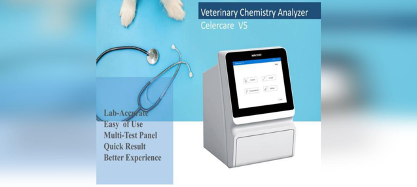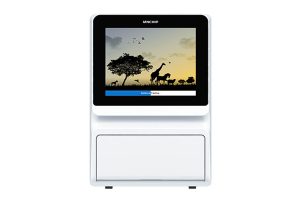Top 9 Precautions for Blood Sample Handling
Top 9 Precautions for Blood Sample Handling
Whether it is a disease examination or physical examination on animals, blood collection will be involved. Understanding precautions for blood sample handling can avoid inaccurate results. What are the precautions for blood sample handling?There are nine precautions as below.
- Avoid vein collapse when drawing samples
When using a syringe to collect blood, you should avoid pulling the piston too fast or too hard. You should minimize suction on the syringe and do not draw back too quickly.
- Prevent hemolysis
Hemolysis refers to the phenomenon that the membrane of red blood cells is broken, and the contents of cells are dissolved for various reasons. Many factors before the blood sample test can destroy the composition of red blood cells and produce hemolysis, which makes the test results lose authenticity and accuracy and affects the diagnosis and treatment of the disease. The following are several ways to avoid hemolysis in blood sample handling.
- According to the type of animal and the location of blood collection, choose the appropriate needle. In order to reduce the mechanical damage to blood cells, large needles should be selected as far as possible on the premise of penetrating the vascular lumen.
- Repeated tapping of the puncture site should be avoided.
- Blood collection should be avoided before the disinfectant (alcohol or iodophor) at the puncture site is dry.
- The needle should be inserted accurately and avoid repeated insertion and exit of the needle tip in the vein.
- After the syringe has collected blood, the needle should be pulled out first, and then the blood should be injected into the test tube from the syringe.
- Ensure blood sample collection volume
As for blood sample handling, roughly estimate the required blood volume according to the test items, ensure that sufficient blood samples are collected simultaneously, and avoid repeated puncture blood collection due to insufficient test blood samples. Besides, based on sufficient blood samples, small volume / micro blood collection vessels should be used as far as possible to avoid iatrogenic blood loss. What’s more, the blood volume should reach the position of the scale line on the blood collection vessel during blood sample handling to ensure the appropriate proportion of blood volume and anticoagulant to avoid hemolysis or blood clot.
- Prevent unwanted blood clotting
After the blood is drawn into the needle, the tourniquet should be released immediately to reduce the blood block time if there is blood return. If the blood collection speed is too slow, the alcohol cotton swab can be used to rub the blood vessel forward and backward along the distal end of the blood vessel or rub the limb at the distal end of the blood vessel to accelerate the blood return.
- Sample detection time limit
In blood sample handling, some substances in blood will change with time, so samples should be detected within 30 minutes after collection.
- Collection Tubes & Fill Order
It is recommended that blood be collected in the following order:
- SODIUM CITRATE Anticoagulant. It is suitable for coagulation function testing.
- NO ANTICOAGULANT. It is suitable for chemistry testing.
- LITHIUM HEPARIN Anticoagulant. It is suitable for chemistry testing.
- EDTA Anticoagulant. It is suitable for hematology testing.

In blood sample handling, you should always fill blood tubes in the correct order to avoid inaccurate test results caused by sample contamination. Besides, the appropriate blood collection tube should be selected according to the test items. If an EDTA anticoagulant tube is used in chemical tests containing electrolytes, it will cause a falsely low Ca and falsely high K+.
- Tube Handling
For the whole blood sample collected into an anticoagulant tube, the tube should be inverted 8-10 times to make the anticoagulant and blood mix well.
There are two points for attention during tube handling:
- The blood collection tube should be turned upside down gently to avoid hemolysis.
- Avoid shaking the test tube violently to avoid red blood cell rupture and hemolysis.

- Blood Sample Quality
Normal blood samples
Normal blood or whole procoagulant blood is separated into layers after centrifugation. And the upper layer is plasma/serum, which is pale yellow.
Abnormal blood samples
- Hemolysis
Red blood cells are broken, and hemoglobin escapes so that plasma and serum samples have a pink/red tint. Proper sample collection and handling techniques should be used during blood sample handling to avoid hemolysis.
- Icterus
Serum and plasma samples are yellow or yellowish-brown transparent caused by the high concentration of total bilirubin in plasma or serum.
- Lipidemia
The concentration of lipids in the blood is too high, making the plasma or serum appear milky white or milky yellow turbid. In order to eliminate the interference of lipemia, the owner should be instructed to fast the animal for 8 hours in advance to collect blood on an empty stomach.
- Blood clotting
If the operation is not standardized or the blood collection equipment is unqualified, it may lead to a visible or invisible red blood clot in blood sample handling. Therefore, it is necessary to select blood collection equipment carefully and thoroughly mix the blood and anticoagulant immediately after blood collection. If there is a blood clot, it is suggested to standardize blood collection again.
- Sample Storage
If the samples are detected after a long time in vitro, the test results’ accuracy may be affected. If the samples cannot be detected in time, the plasma/serum should be separated in time, stored at 2 ~ 8 ℃ in dark and sealed, and detected within 24 hours. Frozen plasma/serum can be detected directly without waiting for rewarming.

It is essential to pay attention to the precautions of blood sample handling. Still, it is also necessary to select a high-quality blood chemistry analyzer to ensure the test results. How to choose a good blood chemistry analyzer analyzer? MNCHIP is the best choice. We have excellent portable blood chemistry analyzers. We provide a fully automatic chemical analyzer for the veterinary market, which can obtain precision reference laboratory-quality results quickly and provides maximum support for diagnosis and treatment.
Medical
2022 Medlab Asia & Asia Health
Booth No: 5. B56
2022 Africa Health
Booth No: 2. A13
2022 Medica
Booth No: Hall 3 / B45
2023 Medlab Middle East
Booth No: Z6. E45